“Mobile Citizen Curator” System Activates New Possibilities for Community-based Aesthetic Education in Baoshan District
Surrounded by green trees and feeling the breeze by the lake, the Baoshan Community Art Museum, which is located in Qilian Park, Dachang Town, Baoshan District is making preparations for the Human and Nature Illustration Exhibition for “Interesting Outdoor Life” and the corresponding Urban and Rural Art Community Practice “Around Shanghai University”. The two newly appointed “mobile citizen curators,” Chen Shujuan and Zhou Haixia, are both “laypeople” without a professional art training. From contacting venues, selecting exhibits to organizing parent-child workshops, they are personally involved and have become the “curators” of the Art Museum.
Art workshop activities held in front of the Baoshan Community Art Museum The Community Art Museum has been piloting the “mobile citizen curator” system for three months. Wang Nanming, the initiator and founder of the “Community Hub”, told reporters that the power of art “can grow vigorously in grass-roots communities like wild grass,” which has triggered more in-depth exploration of whether social grand aesthetic education can go beyond the one-way distribution of high-quality cultural resources, become a two-way and diverse collision and interaction between professionals and the public, and mobilize a wider range of social forces, not only optimizing the supply mechanism of cultural services and cultural products, but also bringing a positive catalytic effect to community governance.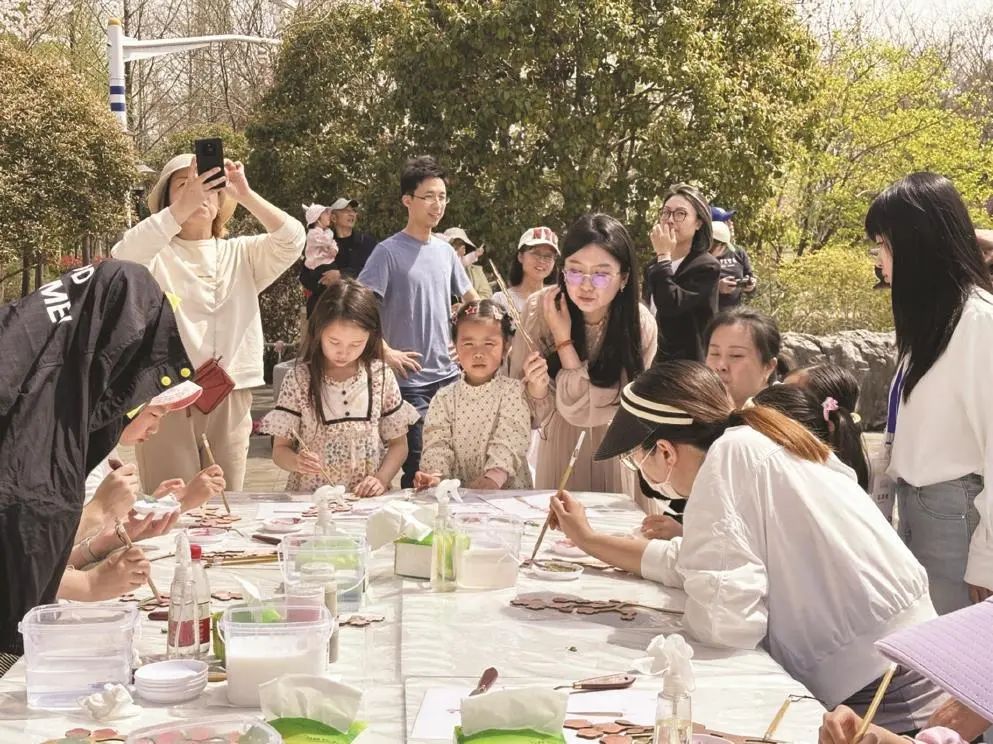

The Community Art Museum located in Qilian Park
A House in the Art Museum Zhou Haixia carefully arranges the literary readings carried from her own house and a few of proud works selected from the blue printing moon-shaped fans made by the trainees of the workshop of the Art Museum on the white round table in the exhibition hall of the Baoshan Community Art Museum to form a corner for the audience to rest comfortably in a way that is equivalent to arranging her own house attentively. When on duty in turns, she likes to capture all kinds of beauty here with her camera. Sometimes it is the tranquility when the sun shines into the exhibition hall, and sometimes it is the concentration of the audience looking at the exhibits. The Baoshan Community Art Museum, with an indoor area of about 240 square meters, is renovated from an idle tea house. In terms of area, it cannot be compared with professional art museums. Sandwiched between several large residential compounds such as Poly Yezhilin and Binjiang Park No. 1, it obviously magnifies the equality of art. People who enter the Museum include the elderly with children, security guards, female cleaners and landscapers. When seeing someone coming in, Ji Fang, a retired woman who serves as the “mobile citizen curator,” will always take the initiative to explain to them frankly that “she wants to share the essence of the exhibits with more people.” Sometimes, though enthusiastic, she also inevitably feels a little embarrassed, “It is found that some of the audience are obviously experts and can talk about the exhibits more eloquently than me.” The “mobile citizen curator” system launched by the Museum has currently attracted more than 40 citizens of different ages and occupations to sign up enthusiastically. Two people form a group and take turns every month. Without setting too many rules and regulations, the Art Museum provides these untrained curators with enough space to give their subjective initiative into full play. Zhu Chen, a subway dispatcher born in 1980s, is one of the first batch of curators on duty. He usually maintains the operation of more than 50 trains and 37 stations for Metro Line 10. When trying to work out the management system of the Art Museum with his partner, he fully shows his experience in dispatching. He even adds an artist from his own community into the “group chat” and develops him into an artist volunteer. Not long ago, the Art Museum held a public education activity centered on classic reading, attracting many parents and children to participate. This is a suggestion from Zhou Haixia. She graduated from the Department of Chinese Language and Literature Fudan University. Using her professional expertise, she leads people to re-explore works with strong sense of frame and rich romanticism such as “The Classic of Mountains and Seas” and “The Book of Songs”. Wang Nanming volunteers to serve as the curator assistant, mobilizing rich social resources such as the Shanghai Academy of Fine Arts, the School of Cultural Heritage and Information Management, and the School of Sociology and Political Science of Shanghai University, providing professional support at any time and also brainstorming with the untrained curators. The past and the present of the Baoshan Community Art Museum The Advancement of Art Community The Baoshan Community Art Museum is more of a community of minds and beauty for the nearby people than an artistic point location close to residents in physical space. Although the piloting has been conducted for only a short time, more possibilities leveraged by the “mobile citizen curator” system may have been seen. Wang Nanming observed that, laypeople with the identity of “curator” are obviously more active than ordinary volunteers in chatting with ordinary audience or communicating with academics and experts, and they further extend some fresh perspectives for this communication field with their own respective knowledge structures, background and experiences. With untrained curators as the adhesive, ordinary people and art seems to be closer. In recent years, as an important part of social grand aesthetic education, the art community has more and more point locations in Shanghai, and is also deepening the aesthetic education results with continuously innovative operation models. The Baoshan Community Art Museum, as one of the representatives, has iterated into the co-construction of resources inside and outside the system from the Mass Culture Space directly created by the Baoshan District Culture and Tourism Bureau, improved the mechanism for social forces to participate in public cultural services, and carried various types of innovation including public policies, administration, management and the practice of new liberal arts in colleges and universities, especially focusing on public aesthetic education activities intervened by professional forces to drive the participation of community residents and make art a method of social governance. The more materially abundant people are, the stronger their cultural and ethical needs are. In recent years, as people’s cultural quality and level have improved, the principal contradiction in cultural supply has shifted from “adequacy” to “quality”. It is necessary to further deepen reforms and accelerate the establishment of system and mechanism conducive to the continuous emergence of high-quality cultural products and services.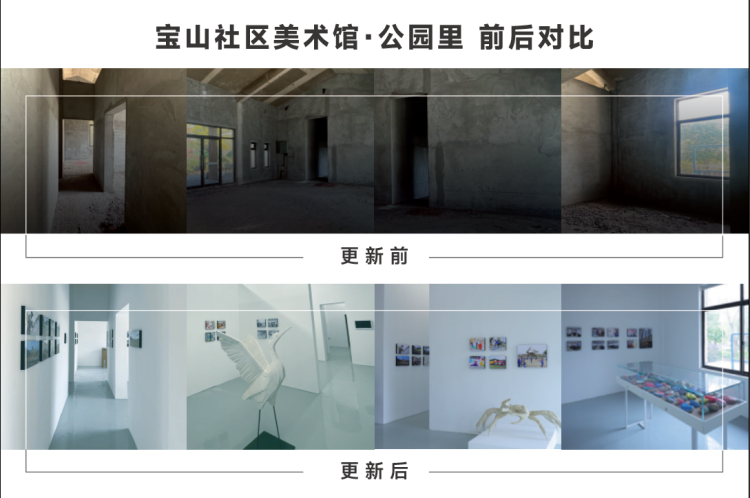
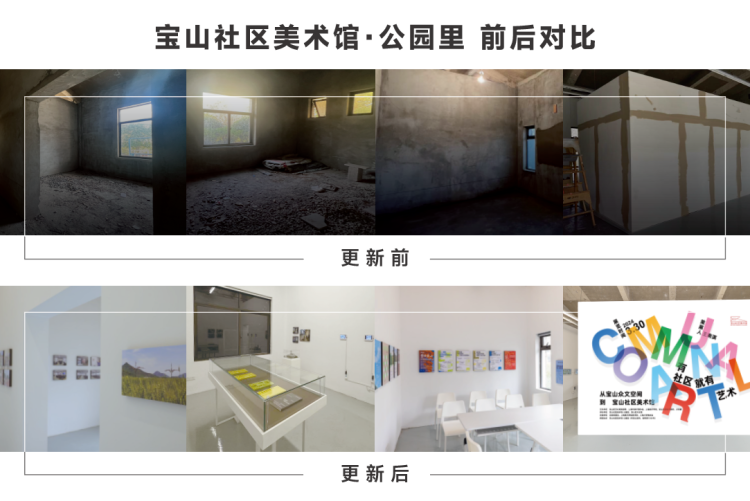
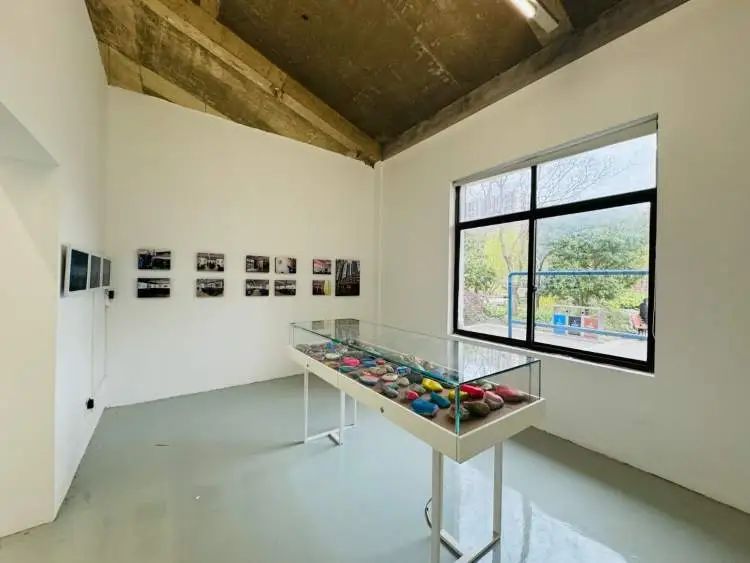
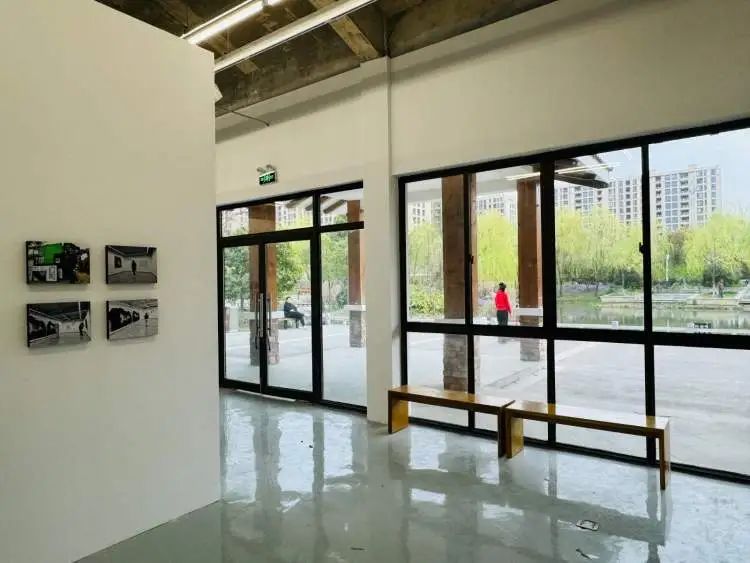
The art community, though set up in Shanghai not long ago, has a broad development space. Too many large and small idle public spaces across the city are waiting to be injected with artistic functions in order to become art communities. Ma Lin, an associate professor at the Shanghai Academy of Fine Arts of Shanghai University and the deputy curator of the China Art Museum, pointed out that the surprises brought by the social grand aesthetic education leveraged by art communities in the future and the effects shown by the social governance in it were worthy of continuous exploration. For example, how to offer high-level “tailor-made” art plans for each community according to local conditions, how to integrate more government support, artistic professional resources, community talents, social capital, etc. into one, and how to promote the sustainable operation of art communities in terms of institutional guarantee, discipline construction, and financial support? In her opinion, public cultural services require reform and innovation, continuous extension of service function, expansion of service scope, and improvement in service efficiency, so as to not only optimize cultural supply but also enhance the satisfaction and happiness of the public.

宝山汇APP

上海宝山微信

上海宝山微博